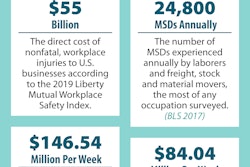
Forget everything you have ever learnt about how buyers ought to manage suppliers. Forget scorecards, KPIs, supplier performance measurement, contracts, arm’s length relationships and quarterly business reviews.
Instead, let’s start at a place based upon the belief that our supply base holds possibilities which can vastly enrich our business, and then figure out what we can do to use our limited resources in order to best tap into this. If we give ourselves permission to think like this, we can begin to open up new ways to engage with our strategic suppliers. Then, if we are to direct our precious resources towards this to best effect, we need some modern agile thinking and action. If we do both these things, a new paradigm for how our strategic suppliers can be the future engine of value for our organization, begins to emerge.
1. Avoiding pyramid paralysis – create the conditions to do something different from the
outset
We are all familiar with the classic supplier importance graphic: the tiered pyramid representing the distribution of suppliers based upon importance. Such classifications quickly become the basis to determine and drive a wide range of actions, often universally applied to everyone at that tier, and quickly sucking up our resources to fulfil the many different obligations for managing suppliers at this tier. However, these are not necessarily the things that will add value in every case and can serve to do little more than paralyse the business.
Instead, what if we had the courage to spend less time on the suppliers who consistently perform well or where the risk is low, and more time with those who could make the biggest difference to us? What if we could design the intervention with suppliers as one that ebbs and flows according to what goes on, with the attention we afforded each supplier being unique to them and that point in time? Then we begin to be agile and direct resources where it will add the most value to us, however, first we have to know what value we need and want.
2. What value do we need from our supply base?
This is a question that rarely gets asked but is, in fact, a game changer. If our organization determines its strategy by only looking inward at what the company does or might do, then the supply base will only ever be something that responds to the demand created by this.
The new paradigm is one where the organization sees its supply base as an extension of itself capable of bringing new, yet unknown sources of value to help realize corporate strategy. It is also one where the very strategy and corporate goals of the organization are informed and shaped by supply base possibilities, which in turn informs, and is informed by, how we connect with our end customer/user.
With this in mind, the first step is to define the value we need and want at a macro level in order for our corporate goals and objectives to be realized. If we are clear about the value, we can begin to identify the suppliers who are most important to help us realize this. These may not necessarily be our current supply base, especially if the company is instigating a shift in direction or focus.
3. Determine who is truly strategic to our organization
A strategic supplier is one who holds the potential to change something in our business that makes our share price go up, or adds great value to end users in a public or not-for-profit setting. It is one who can bring great competitive advantage, help build our brand, create significant shareholder value, or if things were to go wrong, could hurt us really badly. Our determination here must be framed by the value the organization needs from its supply base.
The new paradigm begins by being really clear on who are the strategic suppliers of today and tomorrow with whom we should be working. To determine this requires the right brains in the room and someone to ask the right questions. A list of strategic suppliers will soon emerge.
4. How interested and willing are they?
A strategic supplier relationship is just that - a relationship. If we have decided a supplier is strategic, it follows that we would need to develop a relationship in order to get the value we need from them. It doesn’t necessarily follow that they want or need a relationship with us. Great if they do because this willingness sets the stage for us to build the right relationship, but what if they are not that interested or, worse, what if they pay lip service to us to try and make us believe they are interested but it’s really not so? This could undermine everything we are trying to realize from the relationship, yet it is a very real possibility and one tradition procurement professionals can miss by being blinded by the misguided assumption the supplier will do what we want.
We can only begin to develop a relationship with a strategic supplier if we are certain they will, and are able to, respond in the right way. The question we must answer is: “Is this supplier likely to be willing and capable to engage with us and collaborate towards a new joint goal?”. There are a range of procurement tools that can help this assessment. However, the point here is that we need to make this determination before we engage with the supplier with whom we want to go forward.
5. Engaging with the organization and agreeing our SRM strategy
There are typically multiple touch points with suppliers across the business. Suppliers will, of course, exploit this where they can to shore up their position to their advantage and procurement can often end up battling against the organization to assert good practice. However, if we look at this differently, we can start from the point of thinking about our suppliers not as ‘procurement’s’ but as the ‘organization’s suppliers’. This shift in thinking means that if we are to secure the value we need from our most important suppliers, this has to be done in concert with the entire organization. It is also the reason why good Supplier Relationship Management can only succeed when it is an organization-wide philosophy.
Joint collaborative working with a supplier must start internally in order to understand how the entire organization wants to translate the value it needs and wants from the supply base, into a potential strategy for a specific supplier we agree should be considered strategic. We must verify they are the right potential fit by doing deep dive research into them, the market, the supply chain and also our future requirements. We must have a clear view regarding what our ambition is for the potential relationship, the specific value and outcomes we might want, and where we want the relationship to get to. Finally, we must be certain the supplier is willing and capable and we must also decide whether we will share this vision with the supplier, or if we will keep some of our ambition hidden from them.
6. Setting off to climb a new mountain with our strategic supplier
A strategic joint collaborative relationship must have a shared destiny. This comes from the value we have determined we need overall and specifically for this supplier, and the reason we deemed them to be strategic. This is also the point at which we hope to engage a willing supplier, and therefore our opening pitch to them is to outline the mountain we could climb together.
Clearly at the outset of any new relationship with an important supplier there is much that needs to be agreed together. Our new outcome-based mindset must shape how we proceed. There is no room for the hard, value claiming negotiations we might use with a general supplier where we have great leverage. Instead, negotiations must pursue the true win/win based upon how we can work together to achieve a greater outcome between us.
Our negotiation should seek to secure the best deal for us and for them, working to create a position that feels fair and balanced. If we do not do this, or they end up feeling they have a poor deal, we risk undermining the relationship from the outset. Similarly, in agreeing the contractual arrangements between us, the contract should not be the basis for discussions but rather the output of them – reflecting and crystallizing the detailed discussions that define how we will work together.
7. Agreeing how the relationship will work
When working with companies to help them establish the right relationship with their strategic suppliers I use a document called a relationship charter to define all aspects of how the relationship will work. This is a simple document that defines the key players, vision and scope of the relationship, how the parties will meet and/or engage with each other, the objectives and performance targets, and specific projects both will engage on.
The point with a relationship charter is not the document itself but rather the discussions, negotiations and hard work that has to happen with both parties together in order to create the relationship charter. The document is a very important output of these and creates an aligned basis for both parties to climb the mountain.
8. Creating the right conditions to do something differently
A strategic supplier relationship doesn’t just happen - it requires an investment by both sides to build it and make it happen. We need to create the conditions that enable us to pursue such relationships with suppliers and this may well be different to what we have done before.
Such relationships are likely to require a new sort of transparency and communication with the supplier if they are to be successful. Collaboration doesn’t happen by issuing a purchase order, instead it may well mean joint working at the same location with co-located individuals or teams. It also means adopting new ways to co-ordinate how parties will work together and we should be prepared for this to be very different to anything we have done before.
9. The right people
Companies don’t have relationships with companies but rather, the people in them have relationships with people in the other companies. Therefore, any powerful relationship between companies is defined by the people who interface with each other.
Success is about focusing on the people who will do this and creating the right conditions for a relationship to flourish. We need people with a good degree of emotional competence, who have the right personality traits and know how to build and maintain a relationship. It is about people who are open and consistent in everything they do and who naturally engender trust. They also must have (or be capable of acquiring) the right technical and commercial know-how.
Possibly one of the most important things for any joint team is creating the conditions so that people socialize and get to know each other. If people on each side have a personal relationship and know about each other’s lives, it significantly changes how they view and work with each other and a bond of obligation to do the right thing toward the other emerges. Some of the best teams are the ones that make time to go and drink beer together (and share the cost).
10. Tracking and guaranteeing our progress towards the summit
Success in our new strategic collaborative relationship comes by both parties climbing the mountain and reaching the summit. This may be a long journey and one that needs both parties to support each other along the way.
We need a new agile intervention with the supplier where we are working together with them, sharing and knowing everything about the journey we are on, both focused on getting to the top, and each standing to gain so much that we want to get there.
Ultimately, making this happen is about people, and how we get people from two entities working together with a common purpose and aim. It is also about the organization’s ability to have the courage to move away from traditional approaches to procurement and supplier management, and try something different. If this is possible, there is a mountain out there bigger than any ever climbed before, with a summit that will change the game for our company.
This article is based upon content from the book “Supplier Relationship Management 2nd Ed” by Jonathan O’Brien and reproduced by permission of Kogan Page Ltd.




















